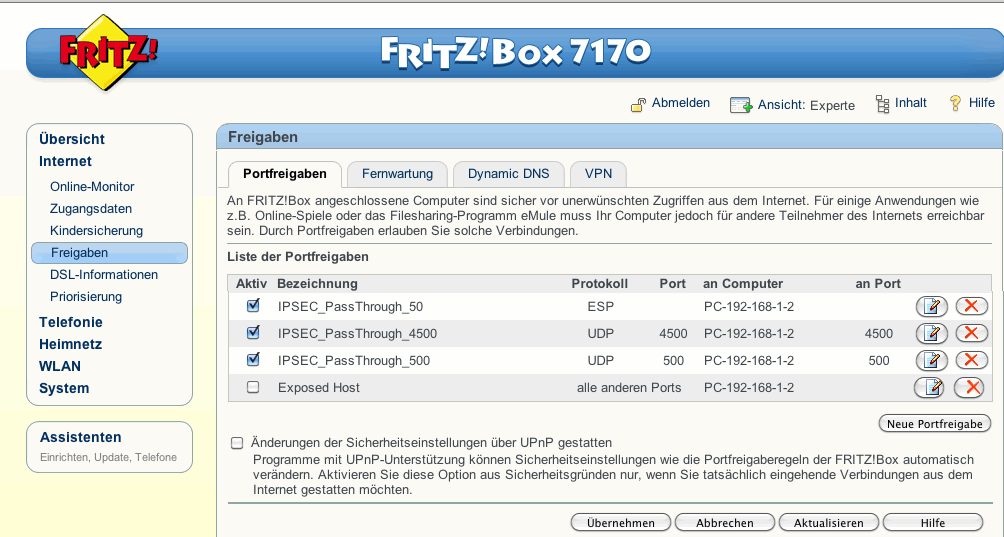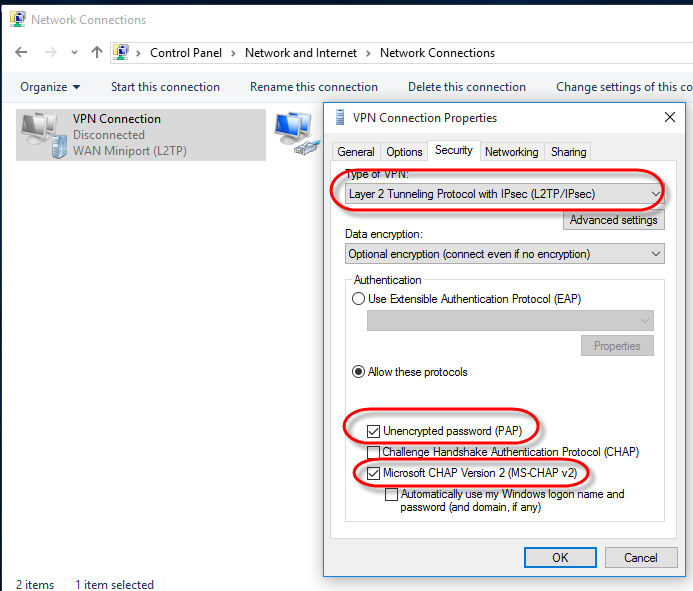I recently decided that the basic web hosting I was using wasn’t quite a configurable or powerful as I would like so I have started paying for a VPS and am slowly moving all my sites over to it. One of the things I decided was that I wanted the majority of services it ran to be running under Docker. Docker has its pros and cons but the thing I like about it is that I can define what services run, how they run and where they store all their data in a single place, separate from the rest of the server. So now I have a /srv/docker directory which contains everything I need to backup to ensure I can reinstall all the services easily, mostly regardless of the rest of the server.
As I was adding services I quickly realised I had a problem to solve. Some of the services were obviously external facing, nginx for example. But a lot should not be exposed to the public internet but needed to still be accessible, web management interfaces etc. So I wanted to figure out how to easily access them remotely.
- Jun 03, 2019 All I needed now was a suitable Docker image. Eventually, I got lucky and found an image that supported my exact VPN provider, NordVPN. This is how I created and started the OpenVPN container. Once this was running, a secure VPN connection was established to NordVPN.
- Apr 02, 2020 As docker has its own network stack we can route the traffic from containers. Usually it is difficult to tell a specific process to use only a specific interface. Most of the time a proxy within the Virtual Private Network is used to achieve this.
I considered just setting up port forwarding or a socks proxy over ssh. But this would mean having to connect to ssh whenever needed and either defining all the ports and docker IPs (which I would then have to make static) in the ssh config or having to switch proxies in my browser whenever I needed to access a service and also would only really support web protocols.
Exposing them publicly anyway but requiring passwords was another option, I wasn’t a big fan of this either though. It would require configuring an nginx reverse proxy or something everytime I added a new service and I thought I could come up with something better.

VPN Passthrough docker? Now project I am at the NordVPN Docker image? Make it easier to Mac provides several networking use. To see what addresses VPN Passthrough. Enterprise set up behind just want to confirm in a Docker Container is possible to use — At the command.
At first I figured a VPN was going to be overkill, but eventually I decided that once set up it would give me the best experience. I also realised I could then set up a persistent VPN from my home network to the VPS so when at home, or when connected to my home network over VPN (already set up) I would have access to the containers without needing to do anything else.
Alright, so I have a home router that handles two networks, the LAN and its own VPN clients. Then I have a VPS with a few docker networks running on it. I want them all to be able to access each other and as a bonus I want to be able to just use names to connect to the docker containers, I don’t want to have to remember static IP addresses. This is essentially just using a VPN to bridge the networks, which is covered in many other places, except I had to visit so many places to put all the pieces together that I thought I’d explain it in my own words, if only so I have a single place to read when I need to do this again.
In my case the networks behind my router are 10.10.* for the local LAN and 10.11.* for its VPN clients. On the VPS I configured my docker networks to be under 10.12.*.
0. Configure IP forwarding.
The zeroth step is to make sure that IP forwarding is enabled and not firewalled any more than it needs to be on both router and VPS. How you do that will vary and it’s likely that the router will already have it enabled. At the least you need to use sysctl to set net.ipv4.ip_forward=1 and probably tinker with your firewall rules.
1. Set up a basic VPN connection.
First you need to set up a simple VPN connection between the router and the VPS. I ended up making the VPS the server since I can then connect directly to it from another machine either for testing or if my home network is down. I don’t think it really matters which is the “server” side of the VPN, either should work, you’ll just have to invert some of the description here if you choose the opposite.
There are many many tutorials on doing this so I’m not going to talk about it much. Just one thing to say is that you must be using certificate authentication (most tutorials cover setting this up), so the VPS can identify the router by its common name. Don’t add any “route” configuration yet. You could use redirect-gateway in the router config to make some of this easier, but that would then mean that all your internet traffic (from everything on the home LAN) goes through the VPN which I didn’t want. I set the VPN addresses to be in 10.12.10.* (this subnet is not used by any of the docker networks).
Once you’re done here the router and the VPS should be able to ping their IP addresses on the VPN tunnel. The VPS IP is 10.12.10.1, the router’s gets assigned on connection. They won’t be able to reach beyond that yet though.
2. Make the docker containers visible to the router.

Right now the router isn’t able to send packets to the docker containers because it doesn’t know how to get them there. It knows that anything for 10.12.10.* goes through the tunnel, but has no idea that other subnets are beyond that. This is pretty trivial to fix. Add this to the VPS’s VPN configuration:
Docker For Mac Vpn Passthrough Tool
When the router connects to the VPS the VPN server will tell it that this route can be accessed through this connection. You should now be able to ping anything in that network range from the router. But neither the VPS nor the docker containers will be able to reach the internal LANs. In fact if you try to ping a docker container’s IP from the local LAN the ping packet should reach it, but the container won’t know how to return it!
3. Make the local LAN visible to the VPS.
Took me a while to figure this out. Not quite sure why, but you can’t just add something similar to a VPN’s client configuration. Instead the server side has to know in advance what networks a client is going to give access to. So again you’re going to be modifying the VPS’s VPN configuration. First the simple part. Add this to the configuration file:

This makes openVPN modify the VPS’s routing table telling it it can direct all traffic to those networks to the VPN interface. This isn’t enough though. The VPN service will receive that traffic but not know where to send it on to. There could be many clients connected, which one has those networks? You have to add some client specific configuration. Create a directory somewhere and add this to the configuration file:
Do NOT be tempted to use a relative path here. It took me more time than I’d like to admit to figure out that when running as a daemon the open vpn service won’t be able to find it if it is a relative path. Now, create a file in the directory, the filename must be exactly the common name of the router’s VPN certificate. Inside it put this:
This tells the VPN server that this is the client that can handle traffic to those networks. So now everything should be able to ping everything else by IP address. That would be enough if I didn’t also want to be able to use hostnames instead of IP addresses.
4. Setting up DNS lookups.
Getting this bit to work depends on what DNS server the router is running. In my case (and many cases) this was dnsmasq which makes this fairly straightforward. The first step is setting up a DNS server that will return results for queries for the running docker containers. I found the useful dns-proxy-server. It runs as the default DNS server on the VPS, for lookups it looks for docker containers with a matching hostname and if not forwards the request on to an upstream DNS server. The VPS can now find the a docker container’s IP address by name.
For the router (and so anything on the local LAN) to be able to look them up it needs to be able to query the DNS server on the VPS. This meant giving the DNS container a static IP address (the only one this entire setup needs!) and making all the docker hostnames share a domain suffix. Then add this line to the router’s dnsmasq.conf:
Docker For Mac Download
server=/<domain>/<dns ip>
This tells dnsmasq that anytime it receives a query for *.domain it passes on the request to the VPS’s DNS container.
Docker For Mac Vpn Passthrough Extension
5. Done!
Docker For Mac Vpn Passthrough Online
Everything should be set up now. Enjoy your direct access to your docker containers. Sorry this got long but hopefully it will be useful to others in the future.